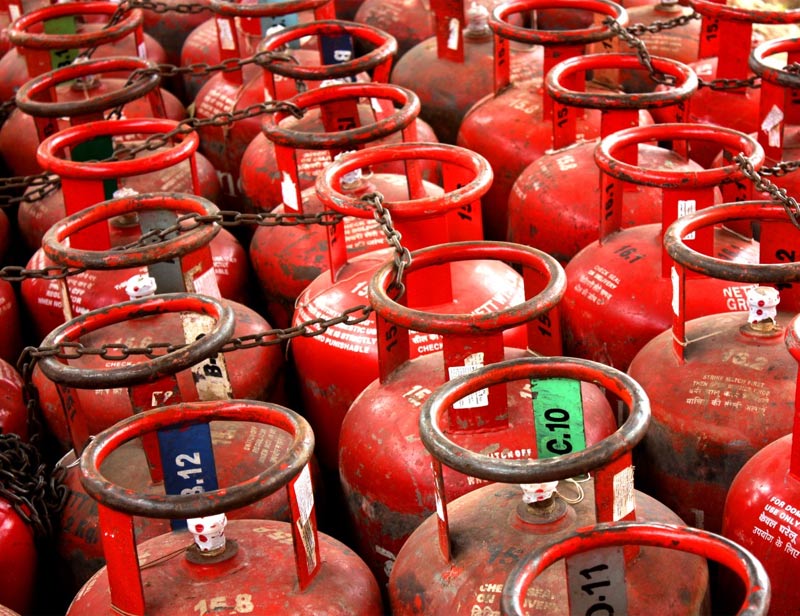Liquefied petroleum gas (LPG)
Liquefied petroleum gas (LPG) is a mixture of gaseous hydrocarbons which has a wide variety of applications. It is produced as an associated gas from natural gas streams and oil extraction as well as from oil refining, and can either be captured or destroyed through flaring or venting.
LPG can be a convenient and clean alternative to natural gas, electric heating or kerosene. It is often used to provide energy to areas without direct access to piped natural gas, to provide off-the-grid refrigeration, and as a power source for combined heat and power (CHP) technologies.
First produced in 1910, LPG now supplies approximately 3% of total energy demand. It is clean in that it burns with no soot and few sulphur emissions, and while it can contribute to air pollution, it does not pose ground or water pollution hazards.
Propane and butane are the two forms in which LPG exists, with their property differences making them suited to particular uses. Propane has a lower boiling point and is better suited to outdoor storage, central heating and other commercial applications. Butane is better suited to indoor applications, such as for powering portable heaters.
The boiling point of LPG is below room temperature, meaning that at normal temperatures and pressures it will evaporate quickly. Therefore, LPG is often stored and supplied in pressurised steel containers such as tanks, cylinders and disposable canisters. These are usually filled to 80-85% capacity to allow for thermal expansion of the LPG in liquefied form.
LPG is widely used in construction, such as for bitumen boilers, heating site accommodation, drying out structural elements, curing concrete, and so on. On construction sites, LPG is usually found in cylinders rather than bulk storage vessels, which are often used when LPG is supplying central heating and/or larger commercial applications.
LPG can burn or explode when in combination with oxygen if there is an ignition source. Containers of LPG may explode if exposed to fire. Other hazards include causing cold burns to skin when in liquid form, as well as non-toxic leakage of LPG displacing oxygen and potentially causing asphyxiation.
Under the Health and Safety at Work, etc. Act 1974, and subsequent legislation, site managers have a responsibility to protect against risks where LPG is being used. Appropriate risk assessments should be carried out under the Control of Substances Hazardous to Health Regulations 2002, particularly when LPG cylinders will be moved using manual handling.
In terms of construction site storage of LPG cylinders, they should:
- Be bept away from combustible material.
- Be kept away from potential ignition sources.
- Be kept away from occupied buildings.
- Not exposed to excessive heat.
- Be stored at least 3 m from cylinders containing oxygen, chlorine, ammonia, etc.
- Be kept in a vertical position.
- Be stored with appropriate fire extinguishers.
- Have prominent displays indicating high flammability, no smoking or naked flames, and so on.
- Be stored securely.
Appropriate evacuation and other safety procedures should be in place in case of fire or leaks. Site staff should be given appropriate information and training regarding LPG.
When being used for the heating of site facilities, the cylinders should be located outside the building, with fixed pipework taking the gas supply inside. Heaters should also have proper, and regularly checked, ventilation. Gas Safe-registered installers should be used to install fixed appliances.
[edit] Related articles on Designing Buildings Wiki
Featured articles and news
Latest Build UK Building Safety Regime explainer published
Key elements in one short, now updated document.
UKGBC launch the UK Climate Resilience Roadmap
First guidance of its kind on direct climate impacts for the built environment and how it can adapt.
CLC Health, Safety and Wellbeing Strategy 2025
Launched by the Minister for Industry to look at fatalities on site, improving mental health and other issues.
One of the most impressive Victorian architects. Book review.
Common Assessment Standard now with building safety
New CAS update now includes mandatory building safety questions.
RTPI leader to become new CIOB Chief Executive Officer
Dr Victoria Hills MRTPI, FICE to take over after Caroline Gumble’s departure.
Social and affordable housing, a long term plan for delivery
The “Delivering a Decade of Renewal for Social and Affordable Housing” strategy sets out future path.
A change to adoptive architecture
Effects of global weather warming on architectural detailing, material choice and human interaction.
The proposed publicly owned and backed subsidiary of Homes England, to facilitate new homes.
How big is the problem and what can we do to mitigate the effects?
Overheating guidance and tools for building designers
A number of cool guides to help with the heat.
The UK's Modern Industrial Strategy: A 10 year plan
Previous consultation criticism, current key elements and general support with some persisting reservations.
Building Safety Regulator reforms
New roles, new staff and a new fast track service pave the way for a single construction regulator.
Architectural Technologist CPDs and Communications
CIAT CPD… and how you can do it!
Cooling centres and cool spaces
Managing extreme heat in cities by directing the public to places for heat stress relief and water sources.
Winter gardens: A brief history and warm variations
Extending the season with glass in different forms and terms.
Restoring Great Yarmouth's Winter Gardens
Transforming one of the least sustainable constructions imaginable.























